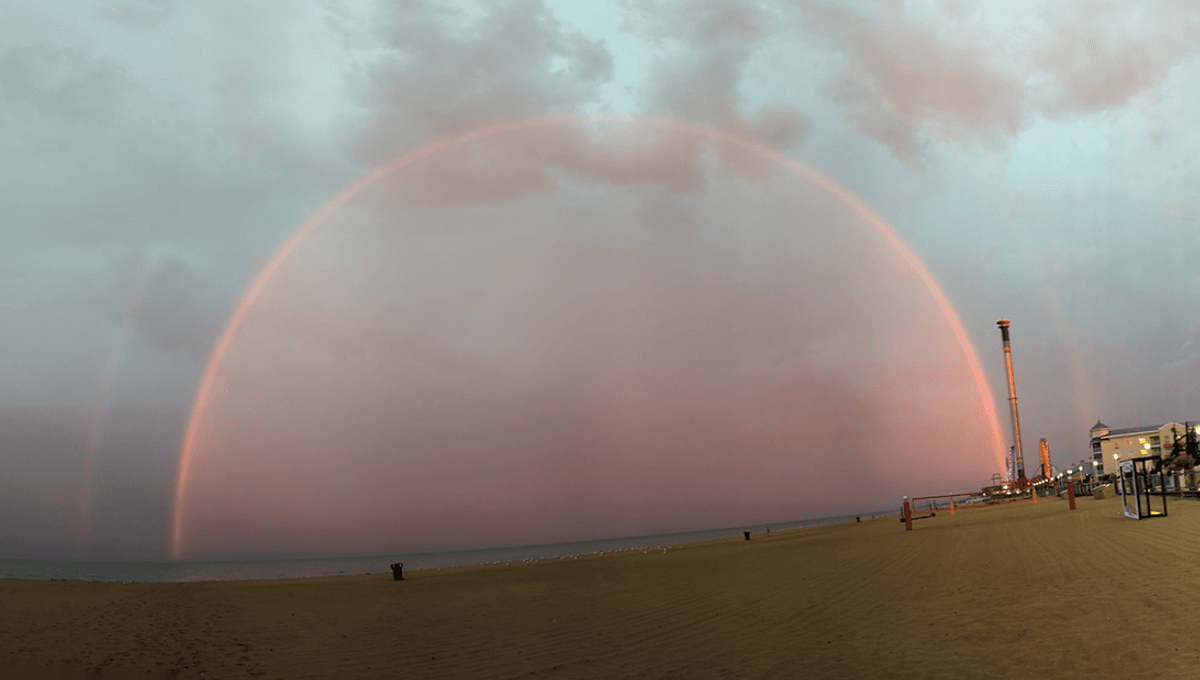
You probably all know how rainbows form, if not from being told as a child, then from having to explain it to a child as an adult. But here’s the basic version anyway in case you, uh, forgot.
The rest of this article is behind a paywall. Please sign in or subscribe to access the full content.
Light in a vacuum – as far as our best theories and experiments suggest – zips along at a constant speed C. But as it enters or leaves a medium, such as air or water, it slows down and changes direction, known as refraction. This is why it can sometimes look like people’s legs / heads have been ripped clean off in a pool.
Sunlight contains many different wavelengths of light, which are slowed by different amounts as the sunlight enters a medium. Violet – the shortest wavelength in the visible spectrum – slows and refracts more than the longest wavelength, red.
As sunlight passes through water droplets in the air at the right angles, some of that light is reflected internally at the back of the liquid drop, before being refracted again as it leaves the droplet, now traveling in a new direction.
“An observer standing in the right place will see the dispersed sunlight reflected back towards them. Light scattered by many drops reaching the observer’s eye will appear as a colourful rainbow,” the UK Met Office explains. “Different colours exit the droplets at angles varying by around two degrees from red to violet. The red light seen by an observer comes from drops slightly higher in the atmosphere than the drops that scatter violet light towards the observer.”
But there is also another phenomenon known as “monochrome rainbows” or “red rainbows”. In certain circumstances, you can be greeted with a big red rainbow
So, what causes these beautiful freaks of nature?
When the Sun hits our atmosphere, light in the blue spectrum is scattered more efficiently than red light by particles within it. With less blue light hitting your eyes, you will perceive the Sun as tinted slightly yellow. The more atmosphere the light has to travel through – say at sunrise and sunset – the more blue light gets scattered, making the Sun appear redder.
Monochrome rainbows are simply rainbows that occur in the same manner outlined above, but when the light refracted by the water droplets is predominantly red from a rising or setting sun.
Source Link: Monochrome Rainbows: In The Right Circumstances, Rainbows Can Look Very Strange Indeed